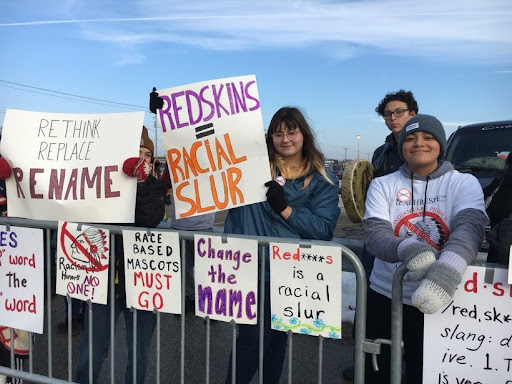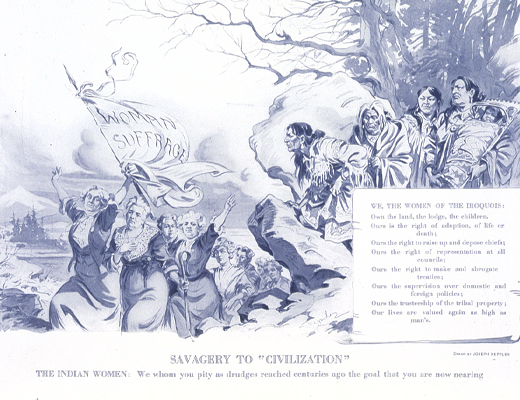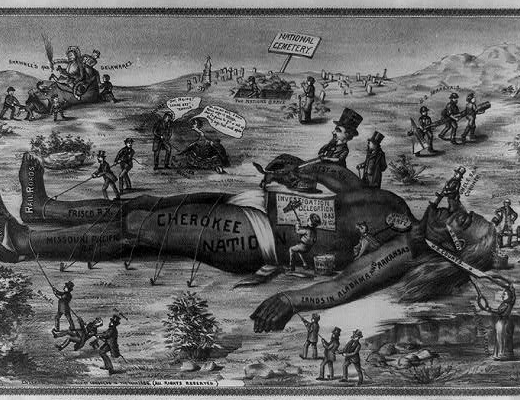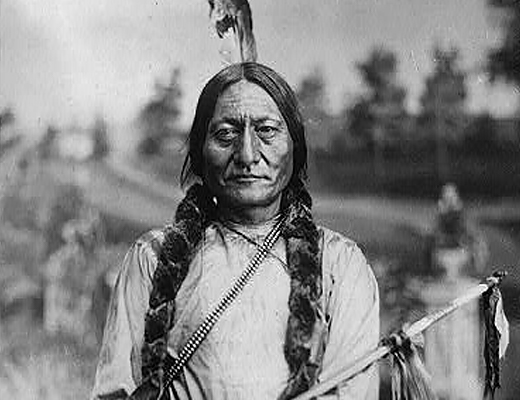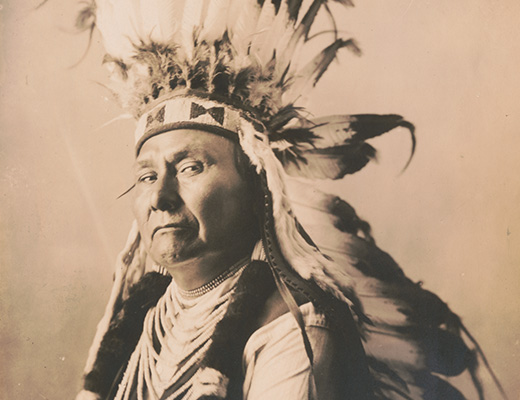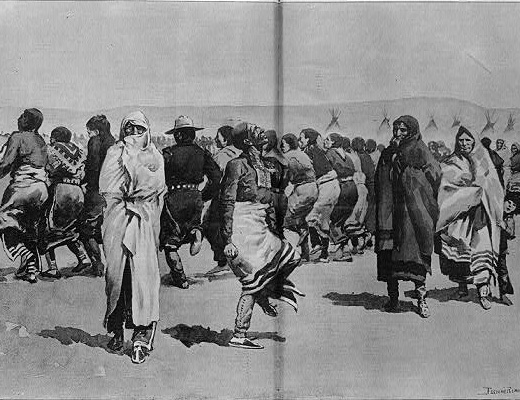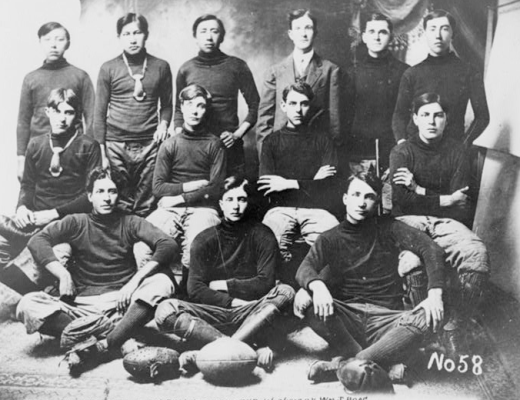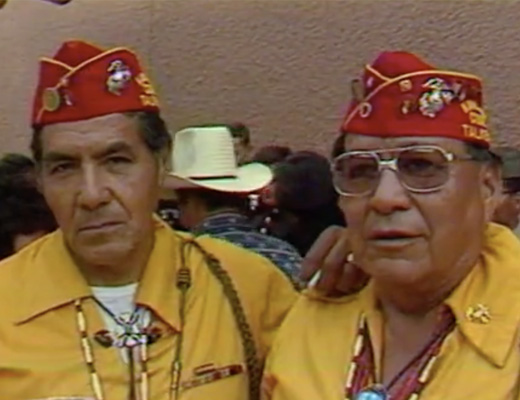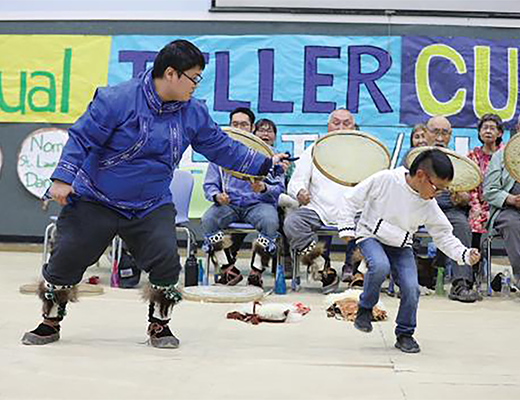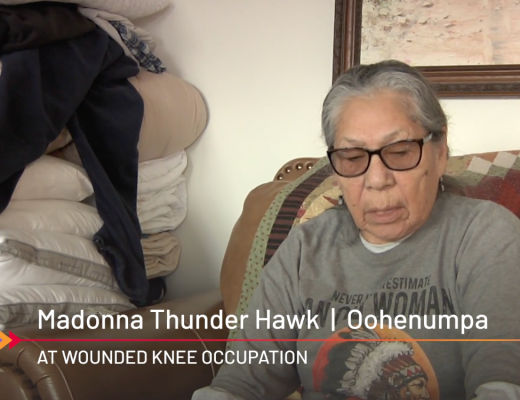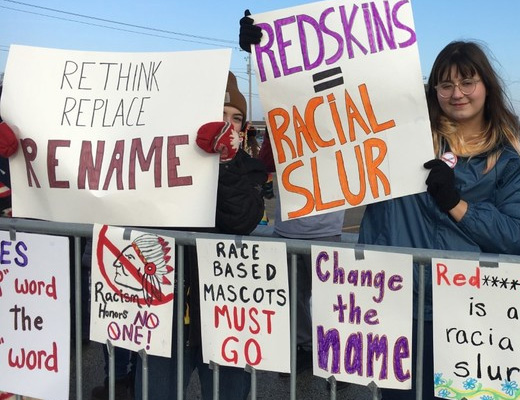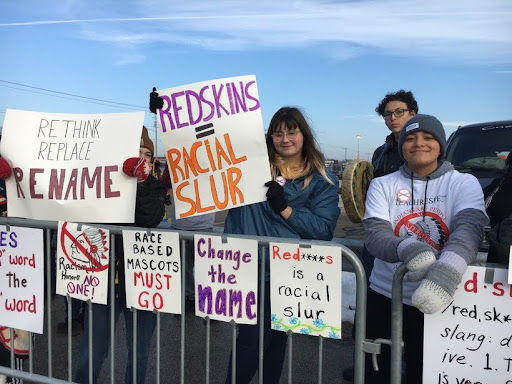Directions
Watch the PBS NewsHour clip of Amna Nawaz’s interview with Kevin Blackistone, Washington Post columnist and filmmaker of Imagining the Indian. Then answer the questions below. This interview took place on July 3, 2020, after the NFL football team in Washington, DC, announced a review of its team name, following years of protests.
“A tipping point for Washington, D.C., football team’s name.” Edited version. July 3, 2020. Permission has been granted for educational purposes only courtesy of PBS NewsHour via American Archive of Public Broadcasting (WGBH and Library of Congress).
Questions
Annotate this Image
Directions:
Take a close look at the story “Sam Harding’s Trophy” by Duke Cuyler. The story takes place on the shores of Ossipee Lake in New Hampshire. Scroll to the top of the 5th column. Then, answer the questions below.
Note:
In the text version of the excerpt below, %$%$% is used to replace the previous offensive name of Washington’s football team.
See the text version of the excerpt below:
For many years there had been suspended from a smoke-stained beam above the broad fireplace a trophy of the early days he had spent on the shore of the lake. It was an Indian’s scalp. . . “You ask me why it is that I keep that thing in the house. Well I will tell you. When I first came up here . . . I hadn’t but one white man for a neighbor and he lived two miles away. But I had plenty of another kind. There were wild beasts and savages on all sides, and there were times when they both gave me lots of trouble. With the beasts I could get along pretty well. . . But with the redskins it was different. It wasn’t no use to try and thin them out, although there was times when I had to try my hand at it. . .You never could tell for a certainty when they were friendly to you or when they were waiting for a good chance to take your scalp....
- What is Sam Harding’s trophy? Why might he consider such an object to be a trophy?
- To what did Harding compare his Indigenous neighbors? How does that make you feel?
- What does a story like this tell you about Duke Cuyler, the journalist who wrote it? The editor at the time of The Spanish Fork Press? And the newspaper’s owner?
- How might similar news stories that use derogatory language published over several decades impact public opinion on the use of Native American mascots?
Use the toggle button above to switch to Magnify Mode. Magnify mode will help you see finer detail in the image.
Switch back to Annotate Mode to create your annotations with click and drag.
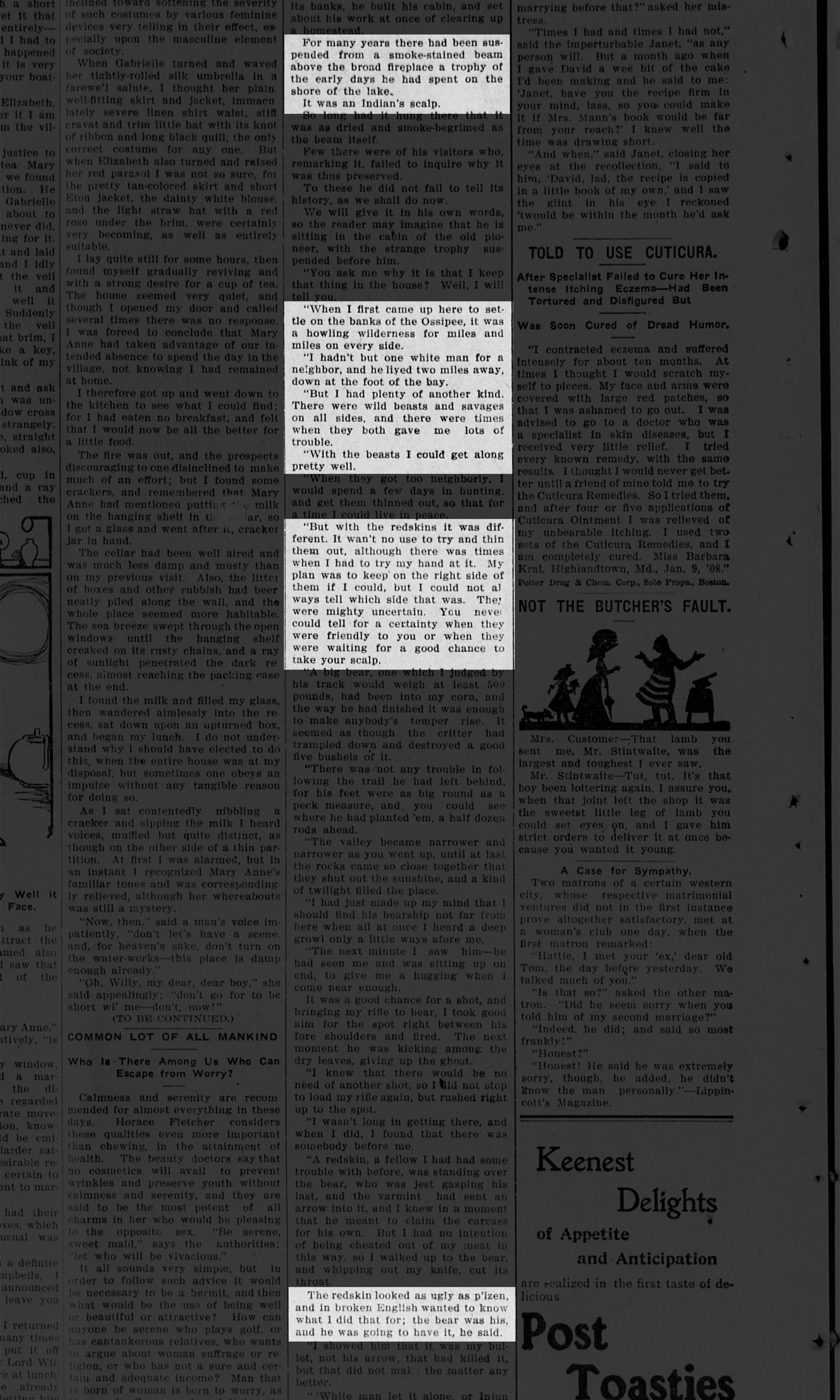
Your Annotations
Puzzler
Directions: Take a look at different sections of the photo one by one and answer the questions that accompany each section. At the end, you will see the completed photograph.
Source: Isabella Saiz, 14, and her friends protest the name and mascot of Washington's NFL team outside Lambeau Field in Green Bay on Sunday, Dec. 8, 2019. Photo courtesy of Wisconsin Public Radio to be used for educational purposes only. December 8, 2019. Photographer: Megan Hart/WPR.
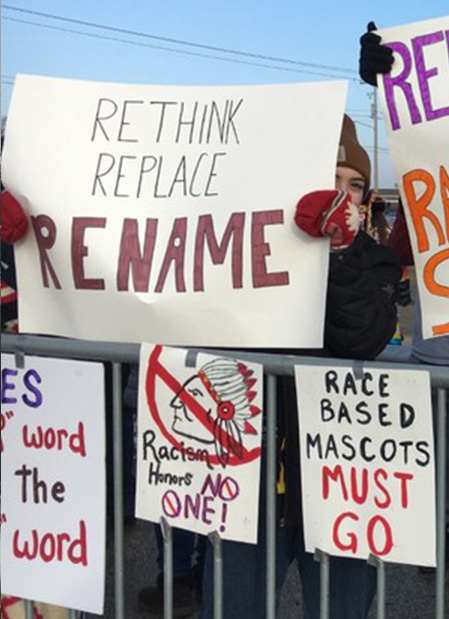
Cropped Image 1
What theme is expressed on the posters? Are the posters handmade or professionally printed? What might this tell you about those who are displaying the signs?
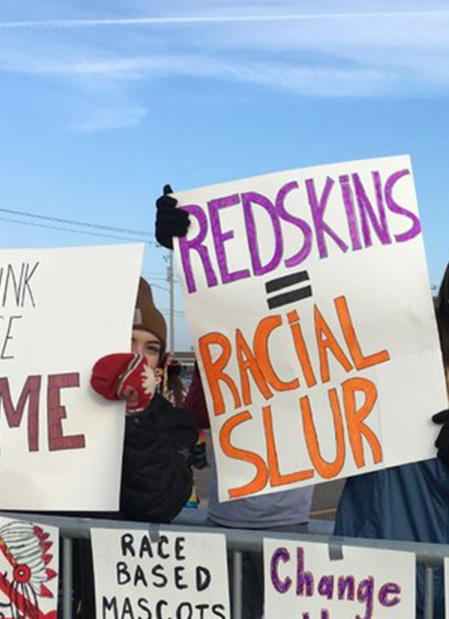
Cropped Image 2
Explain what the poster on the left means. Which football team is the focus of the poster on the right? How does the sign define the word in question?

Cropped Image 3
What clues can you determine from the partially hidden poster in the bottom right?
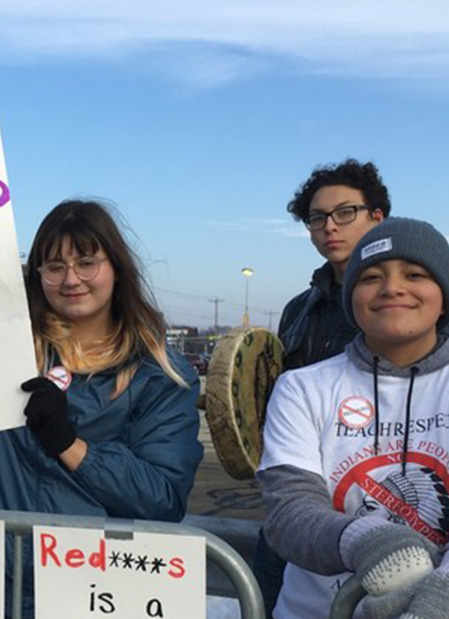
Cropped Image 4
Describe the protestors shown here. Who is present? What might their facial expressions say?
